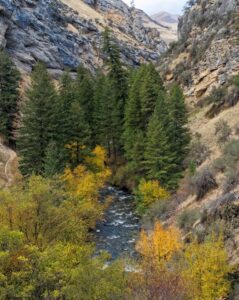On June 23, the Payette National Forest issued the draft Decision Notice (DN) and Finding of No Significant Impact (FONSI) for the Rapid River Travel Management project. The decision to implement the non-motorized use alternative effectively maintains the existing management direction for the Congressionally-designated Wild and Scenic Rapid River.
The selected alternative designates 25.7 miles of existing National Forest trails as “open to foot and horse traffic only, including sections of trail within the Rapid River Wild River corridor.” Mechanized and motorized use will not be allowed on the trails, with exceptions for specific management activities.
Although the preferred alternative included the proposal to designate 2.3 miles of trail as open to motorcycles (including the construction of two motorcycle turnarounds), the Forest Service ultimately selected the non-motorized alternative because it “best preserves the character of the area and outstanding remarkable values for which the Wild River Corridor was designated.” Public comment and Nez Perce Tribe concerns also played a significant role in the Forest Service’s decision-making process.

Jonathan Berman photo.
It is important to note that no motorized trails will be closed, nor are motorized and mechanized opportunities lost as a result of this decision. In fact, this management direction solidifies the status quo that was established over a decade ago. A 2010 settlement between ICL, The Wilderness Society, the Hells Canyon Preservation Council, and the Forest Service prohibited motorized and mechanized use in the Wild Rapid River corridor and on adjoining lands within the watershed. This management direction provides more certainty for wildlife, fisheries, and sportsmen/women and recreationists who seek quiet and secluded outdoor opportunities in the area.
Rapid River was designated a Wild and Scenic River in 1975 through the Hells Canyon National Recreation Area Act (HCNRA). The implementing regulations paid special attention to the Rapid River drainage, its water quality, and its fisheries due to the significance of the watershed to the overall populations of Idaho’s anadromous fish.
Rapid River contains some of the cleanest, clearest, and coldest waters found in Idaho. Now, the river and its watershed will remain intact – thanks to many ICL members and supporters who spoke up in favor of the non-motorized alternative. Keeping a steadfast commitment to our public lands and resources pays off – and will keep both the Rapid River and other parts of Idaho wild for years to come.
To learn about more opportunities to stand up for Idaho’s public lands, sign up for our Public Lands campaign updates.

